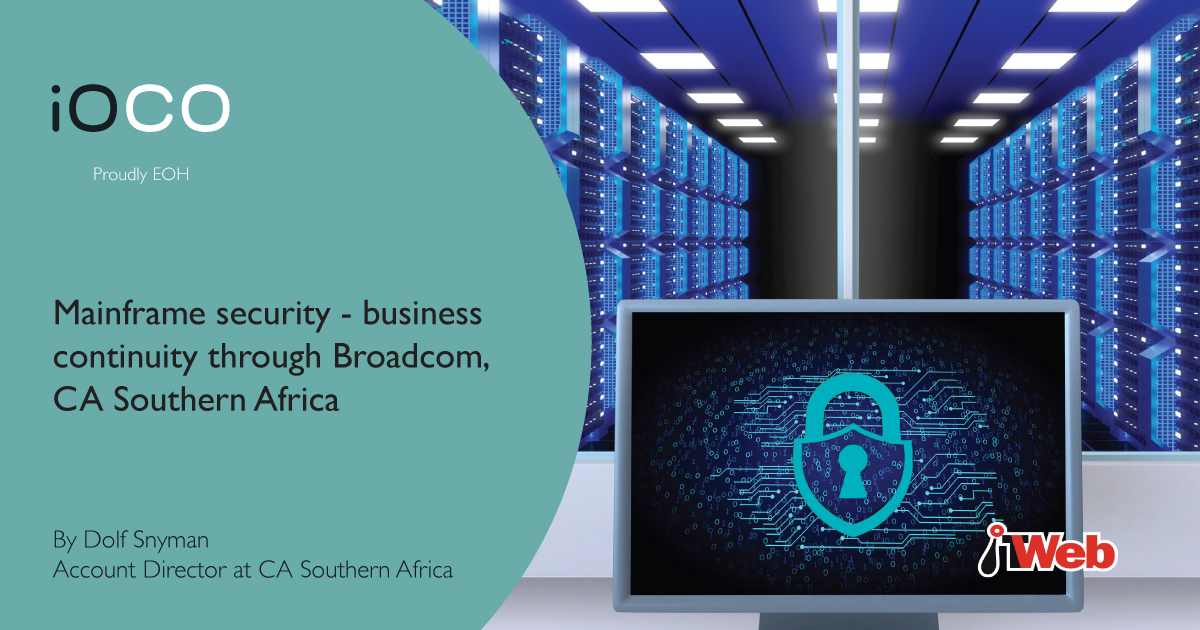Business continuity covers a lot of ground, ranging from facilities management to staffing, but it typically goes back to disaster recovery. While that focus is important, the ability to keep companies up and running no matter what happens calls for more.
This is according to Dolf Snyman, CA Southern Africa Account Director, who adds that resiliency is really the result of two different factors: having a flexible infrastructure and the capability to bounce back from outages.
CA Southern Africa is the sole sub-Saharan representative of CA Technologies, a Broadcom company.
“Anticipating disasters and recovering from them quickly is the name of the game. Successful organisations know to expect the unexpected and are prepared for it by investing flexible infrastructures that are always ready to respond to potential outages. These are the companies most equipped to recover from outages – virtually instantly, and thus are able to minimise business impact and avoiding any true disruption,” says Snyman.
Technology plays a significant role in practically everything we do. We are so dependent on our systems that even a brief glitch is a cause for major consternation and reputation damage.
“System outages can result in serious economic loss and lasting harm to customer experience and confidence. There is always a need to manage risk to the IT infrastructure at all levels to ensure business continuity. That task continues to face increasing challenges. Over the last several years, unprecedented global events have had a significant impact on both IT and business requirements. The pandemic has accelerated the need for businesses to enhance their digital experiences. Global warming, social unrest and regional conflicts underscore the need for geographically dispersed sites to keep critical business services running in the event of a disaster,” Snyman notes.
He emphasises that no matter how much planning is done, some things are just out of the control of organisations. “Natural disasters alone are an example of the need to be prepared for everything and expect the unexpected. Organisations succeeding in managing risk better than others will reap enduring value.”
The case for flexible infrastructure
To minimise and manage risk, it is necessary to build resiliency in both hardware and software. Doing so enables the avoidance of outages and provision of continuous operations. “This is accomplished through built-in redundancy and tight integration of hardware, operating systems and middleware, which hosts critical applications.
“In the event that outages occur, companies need to have the infrastructure necessary to get things back up and running as quickly as possible. Hardware has become faster every year, and the software that supports it has kept pace. As a result, global enterprises experiencing outages and downtime can flick the switch and be up and running immediately. This is the essence of having a flexible architecture,” confirms Snyman.
Delivering resiliency
The new z16 mainframe aids the goals of availability and proactive outage avoidance with support features that boosts recovery and flexible infrastructure. “When IT shops bring the power of industry-leading automation, performance and reporting tools to the new platform, they can manage risks and ensure resilient applications even more easily. Broadcom provides these tools and works with clients to build resiliency seamlessly into their systems through solutions that enable them to better manage their IT infrastructures.
“We regularly partner with clients to improve how effectively they can handle the mainframe equivalent of a power outage. For example, OPS/MVS enables businesses to automate system recovery boost activity. And it has management features so businesses can co-ordinate application movement for a flexible infrastructure migration event.”
Successful businesses want to increase efficiency and improve system performance. “We make those goals a reality for our clients by empowering them to proactively identify and resolve problems. SYSVIEW is a good example. The software delivers the capability for real-time monitoring and visibility into mainframe performance, providing access to data across multiple systems. This enables companies to gain actionable insights into resiliency features before and during a recovery event.”
Snyman emphasises that an important early step in building a flexible infrastructure is mapping business processes to IT services and resources. “Doing so provides visibility into IT resource consumption so you can assess system performance and conduct appropriate storage and capacity planning. MICS Resource Management delivers this capability by simplifying the management of data and improving visualisation. As a result, businesses can better align their IT investments to critical business needs, such as licensing additional instant recovery or flexible infrastructure resources to shore up their system’s resiliency features.”
Business continuity and regulatory compliance also require mainframe shops to prove their Db2 systems can quickly recover from breaches and failures. “Broadcom’s Recovery Suite for Db2 for z/OS helps validate that users can successfully recover Db2 in a timely fashion to ensure that they are always in compliance with regulations and business objectives,” concludes Snyman.
By Dolf Snyman, CA Southern Africa, Account Director.



